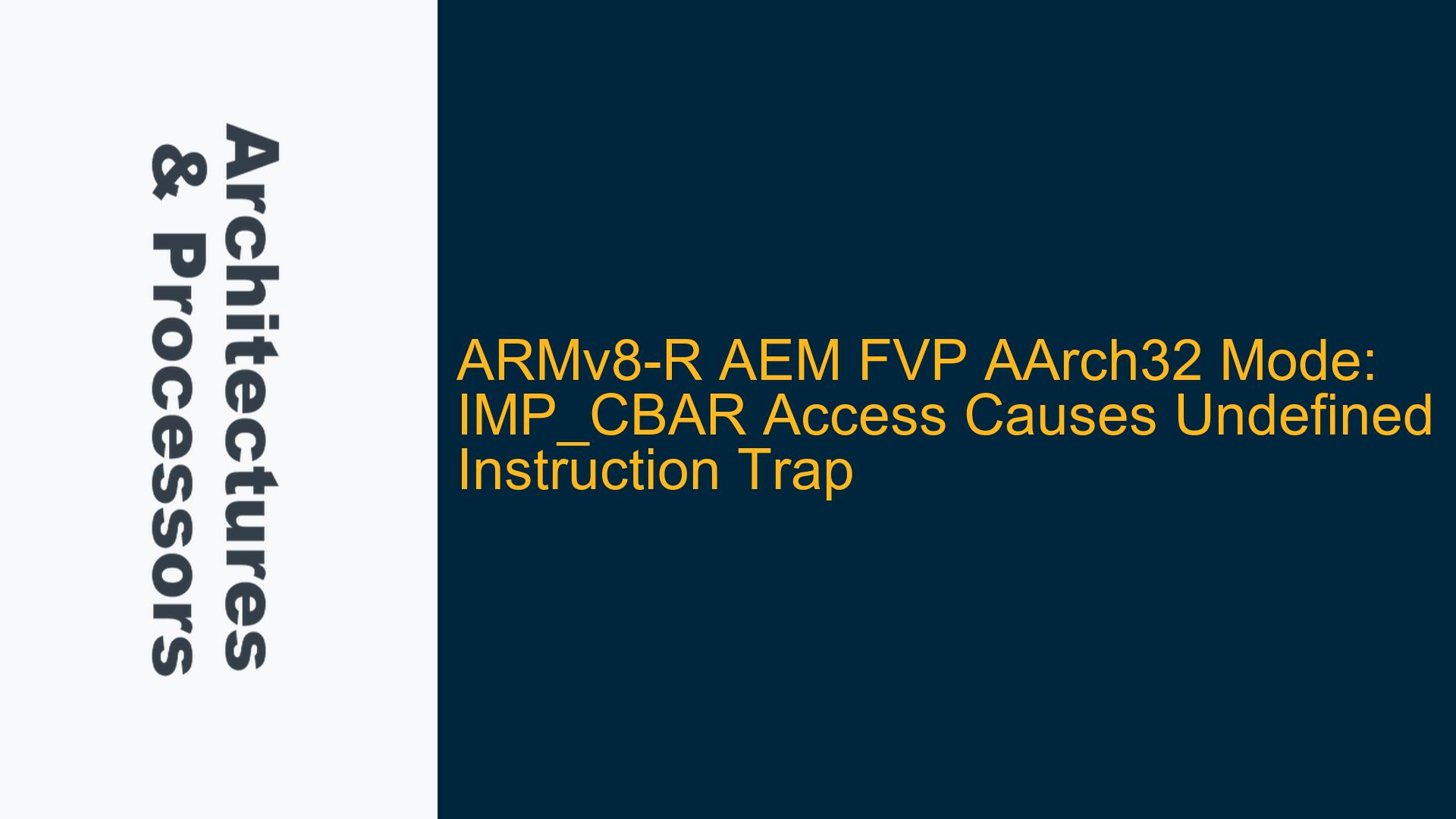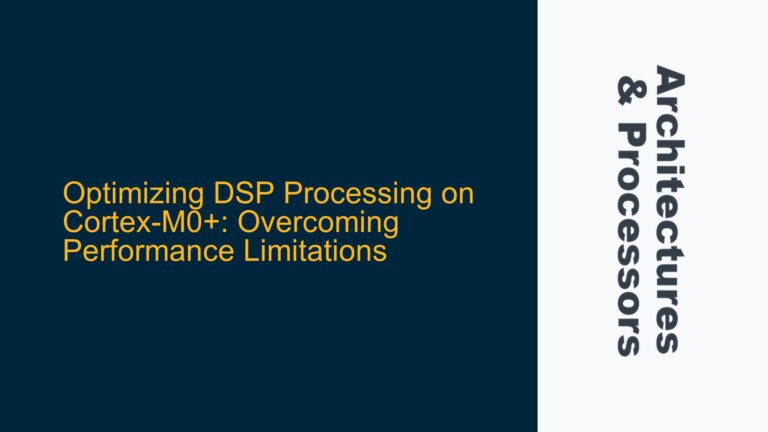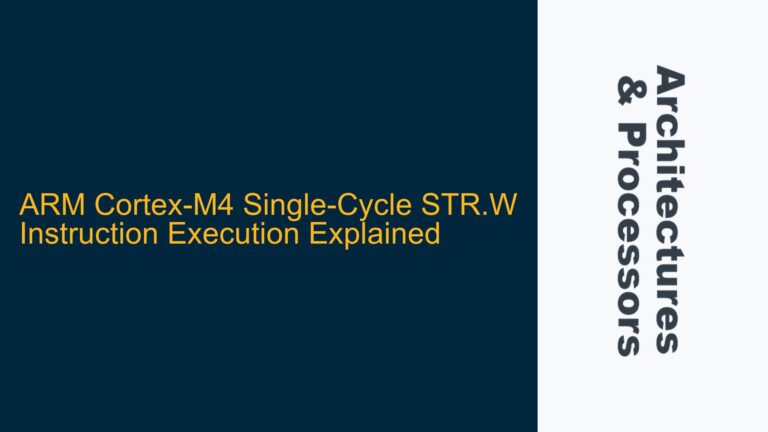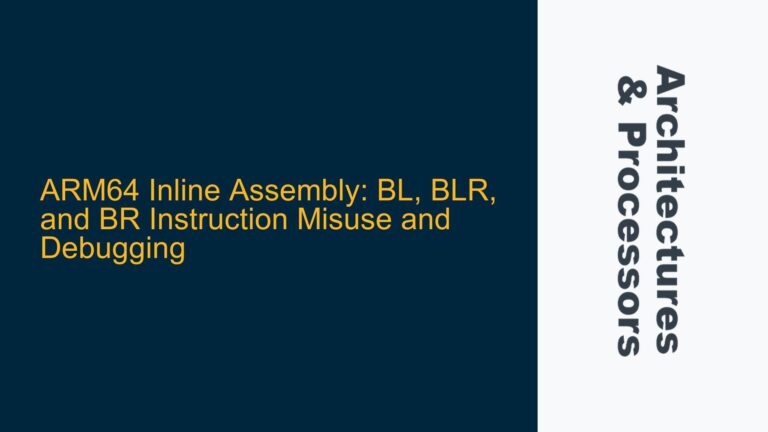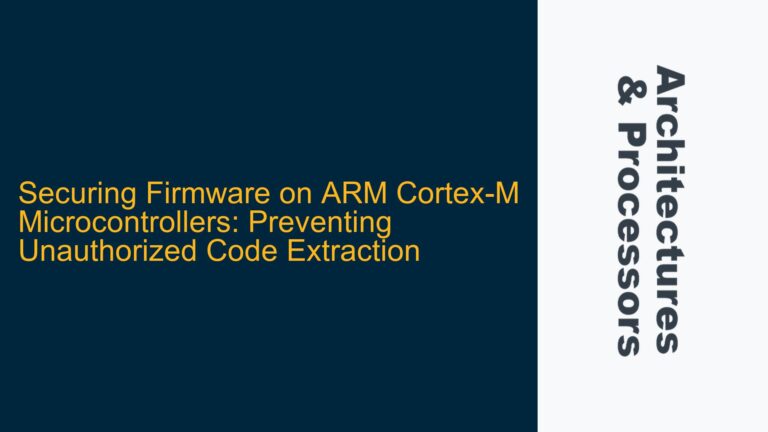ARM Cortex-R52 IMP_CBAR Access in AArch32 Mode Fails with Undefined Instruction
The ARM Cortex-R52 processor, when operating in AArch32 mode, provides access to the Implementation-Defined Configuration Base Address Register (IMP_CBAR). This register holds the physical base address of the memory-mapped Generic Interrupt Controller (GIC) Distributor registers. However, during simulation using the ARMv8-R AEM Fixed Virtual Platform (FVP), attempts to access the IMP_CBAR register result in an "Undefined Instruction" trap. This issue is particularly problematic for developers integrating the GIC Distributor into their ARM-based SoC designs, as the IMP_CBAR register is critical for configuring the GIC’s memory-mapped registers.
The ARM Cortex-R52 Technical Reference Manual (TRM) specifies that the IMP_CBAR register is accessible in both AArch32 and AArch64 modes. However, the AEM FVP, being a generic platform model, does not support implementation-defined registers like IMP_CBAR. This limitation is not immediately apparent in the documentation, leading to confusion and simulation failures. The issue is further compounded by the fact that the AEM FVP is often used as a starting point for ARMv8-R development, making this a common stumbling block for engineers.
AEM FVP Limitations and Cortex-R52-Specific Register Support
The root cause of the "Undefined Instruction" trap lies in the architectural differences between the AEM FVP and the Cortex-R52-specific Fast Models. The AEM FVP is a generic platform model designed to emulate the ARMv8-R architecture at a high level, without implementing processor-specific features. This includes the omission of implementation-defined registers such as IMP_CBAR, which are specific to the Cortex-R52 processor.
The Cortex-R52, being a real-time processor, includes several implementation-defined features that are not part of the base ARMv8-R architecture. These features are documented in the Cortex-R52 TRM but are not implemented in the AEM FVP. When the processor attempts to access the IMP_CBAR register, the AEM FVP, lacking support for this register, generates an "Undefined Instruction" exception. This behavior is consistent with the ARM architecture, which mandates that attempts to access unimplemented or undefined registers must result in an exception.
The issue is further complicated by the fact that the AEM FVP does not provide clear warnings or documentation about its lack of support for implementation-defined registers. This can lead to significant debugging efforts, as engineers may initially suspect issues with their GIC configuration or memory mapping rather than the simulation platform itself.
Migrating to Cortex-R52-Specific Fast Models and GIC Configuration
To resolve the IMP_CBAR access issue, developers must transition from the generic AEM FVP to the Cortex-R52-specific Fast Models. The ARMCortexR52x1CT model, available through ARM’s Fast Models portfolio, provides full support for the Cortex-R52’s implementation-defined features, including the IMP_CBAR register. This model accurately emulates the Cortex-R52’s behavior, allowing developers to access the IMP_CBAR register and configure the GIC Distributor as intended.
The migration process involves several steps. First, developers must obtain the ARMCortexR52x1CT model, which is a license-protected component. This can be done by contacting ARM representatives or through existing licensing agreements. Once the model is available, it must be integrated into the simulation environment, replacing the AEM FVP. This integration typically involves updating the simulation scripts and configuration files to reference the new model.
After migrating to the ARMCortexR52x1CT model, developers can access the IMP_CBAR register without encountering the "Undefined Instruction" trap. The register can be accessed using the appropriate AArch32 instruction, as specified in the Cortex-R52 TRM. The physical base address of the GIC Distributor registers can then be configured, enabling proper interrupt handling in the SoC design.
To ensure correct GIC configuration, developers should follow these steps:
-
Verify the IMP_CBAR Register Address: The IMP_CBAR register holds the base address of the GIC Distributor registers. This address must be aligned to the size of the GIC Distributor register space, typically 4 KB. Developers should verify that the address is correctly aligned and falls within the valid memory range for the SoC.
-
Configure the GIC Distributor Registers: Once the base address is set, developers must configure the GIC Distributor registers to enable interrupt handling. This includes setting up interrupt priorities, enabling specific interrupts, and configuring the GIC’s CPU interface.
-
Test Interrupt Handling: After configuring the GIC, developers should test interrupt handling to ensure that the GIC is functioning correctly. This involves generating interrupts and verifying that they are correctly routed to the processor and handled by the appropriate interrupt service routines.
By following these steps and migrating to the Cortex-R52-specific Fast Models, developers can resolve the IMP_CBAR access issue and ensure proper GIC configuration in their ARM-based SoC designs. This approach not only addresses the immediate problem but also provides a more accurate simulation environment for further development and testing.
In conclusion, the "Undefined Instruction" trap when accessing the IMP_CBAR register in the AEM FVP is a result of the platform’s lack of support for implementation-defined registers. By transitioning to the Cortex-R52-specific Fast Models and following the recommended GIC configuration steps, developers can overcome this limitation and achieve their design goals. This solution highlights the importance of using the appropriate simulation tools for specific processor architectures and the need for clear documentation to guide developers in their efforts.
